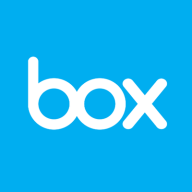

Box and Azure NetApp Files are both leading options in the cloud storage and management space. Box has a competitive advantage in pricing and support, while Azure NetApp Files is preferred for its high-quality features and overall superior value.
Features: Box is recognized for its collaboration tools, content management features, and user-friendly interface. Azure NetApp Files is noted for its advanced performance, scalability, and integration capabilities, making it more efficient for large-scale operations.
Room for Improvement: Box needs better integration with third-party applications, enhanced security measures, and a more intuitive user interface. Azure NetApp Files could improve its documentation, provide more intuitive management tools, and offer better user guidance.
Ease of Deployment and Customer Service: Box is praised for its straightforward deployment process and responsive customer service. Azure NetApp Files has a more complex deployment process but is acknowledged for excellent support once set up.
Pricing and ROI: Box offers competitive pricing models that are cost-effective, with a satisfactory ROI. Azure NetApp Files, despite being more expensive, delivers higher ROI due to its advanced features and performance benefits.
They have top-notch people.
I would like for them to have more compression so that it can avoid using more storage.
It is expensive, especially with NetApp Ultra Storage.
The most valuable feature is that the sixty-terabyte database snapshot can be done in less than two to three minutes.


Azure NetApp Files is designed for unstructured data, virtualized SAP systems, SQL backups, NFS and CIFS protocols, Azure Virtual Desktop storage, and optimizing file share services. It supports high performance and networking integration in Microsoft Azure.
Azure NetApp Files offers features such as SnapMirror for data protection, rapid provisioning, elastic scaling, and ultra-fast SQL backup and restore. It provides a seamless experience with fast snapshotting, high availability, security, and ease of setup. Users benefit from significant performance improvements and the ability to manage substantial workload migrations effortlessly. This service is ideal for environments like Azure Kubernetes Service and cloud EPM platforms, where speed, flexibility, and performance are crucial.
What are the key features?Azure NetApp Files is implemented in various industries requiring robust file storage solutions, from educational environments where performance boosts are critical to businesses leveraging Azure Kubernetes Service for containerized applications. It supports high-demand environments, optimizing data management and improving efficiency.
Box is a Modern Content Management Platform for companies of all sizes and industries. The difference that Box brings is that it offers the security and controls admins need with the sharing and collaboration capabilities end users want. Box has made it easier for people to securely share ideas, collaborate and get work done faster. Today, more than 62,000 businesses, including 59% of the Fortune 500, trust Box to manage content in the cloud.
The Box platform provides HIPAA, FINRA, FedRAMP, and many other compliances to go with granular access permissions and advanced security capabilities.
By using Box you can sync, share, and collaborate on all types of files, anywhere, on any device - but that's just the beginning. You can choose where to store your data, to manage your own encryption keys, and set workflows to automate content-based processes. You can also assign custom metadata tags to content, watermark sensitive content, and set file retention or legal hold policies.
Box has deep, native integrations with Microsoft Office and Outlook, Google Apps for Work, Salesforce, Netsuite, Docusign, Adobe, and many other best-of-breed solutions you may already be using.
We monitor all Cloud Storage reviews to prevent fraudulent reviews and keep review quality high. We do not post reviews by company employees or direct competitors. We validate each review for authenticity via cross-reference with LinkedIn, and personal follow-up with the reviewer when necessary.